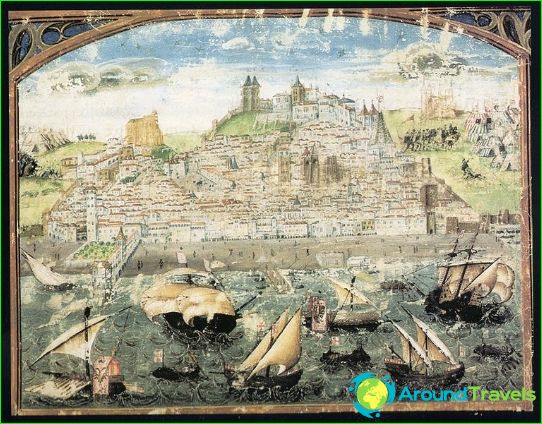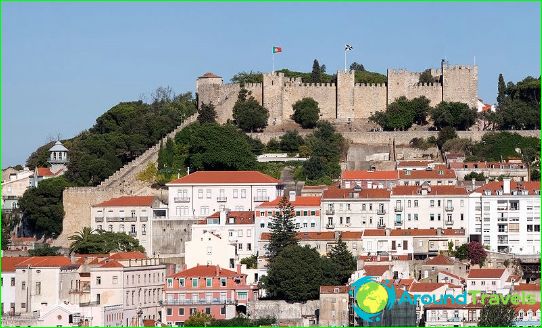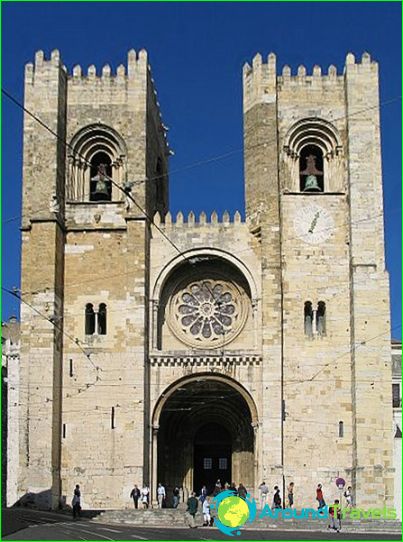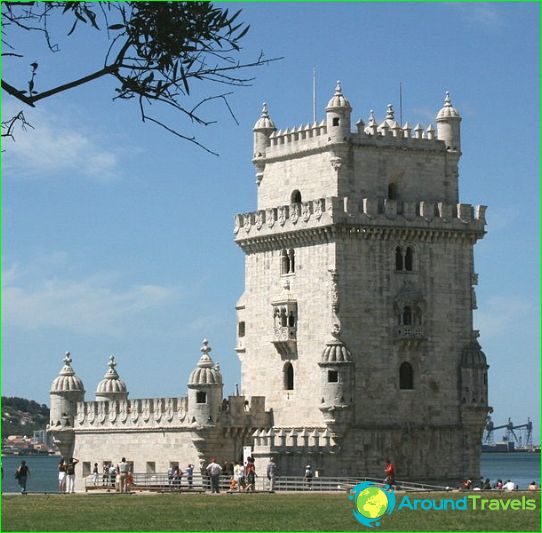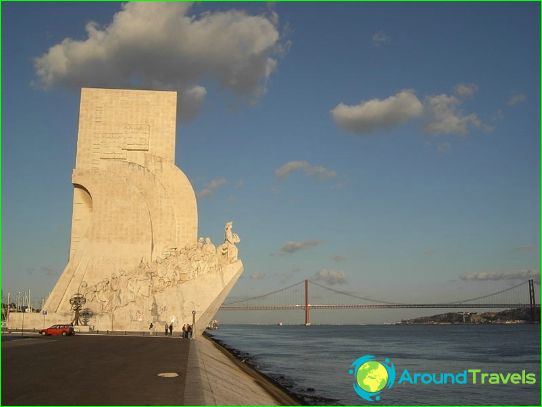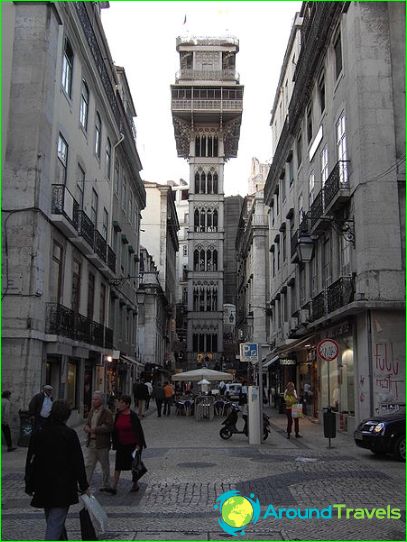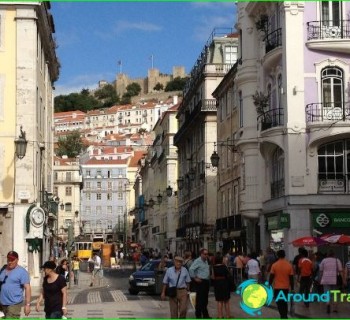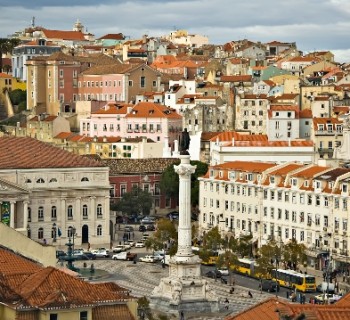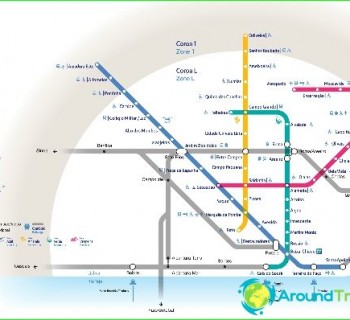Lisbon history
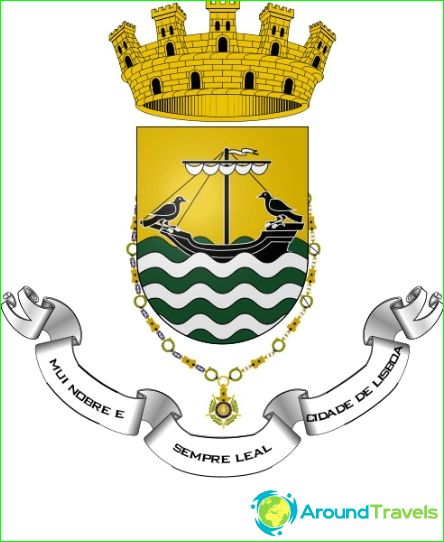
Coat of arms of lisbon
Lisbon is the capital and main port of Portugal, as well as the westernmost capital of continental Europe. The city is located on the western coast of the Iberian Peninsula in the picturesque bay of Mar da Paglia, which is the estuary of the largest river of the peninsula - the Tagus.
And although the first settlements at the mouth of the Tagus River existed in the Neolithic era, the exact date of the founding of Lisbon is unknown. According to one version, around 1200 BC. the Phoenicians settled in a convenient well-protected natural harbor. Some historians suggest that the Phoenician trading port was located in the center of modern Lisbon on the southern slope of the Castle Hill and was called Allis Ubbo. True, no reliable data was found to support this version, and it is likely that the settlement was founded by the indigenous people of the peninsula, who maintain active trade relations with the Phoenicians. There is also a legend that Lisbon was founded by the famous Odysseus..
Ancient history
In the 1st millennium BC. The region was massively inhabited by the Celts, from whom, as a result of inter-tribal marriages with the indigenous peoples of the peninsula, the so-called Celtiberians appeared - the ancestors of the modern Portuguese. In the 8-7 centuries BC. ancient Lisbon was already a fairly large and prosperous settlement. In the writings of the Roman geographer Pomponius Mela, Lisbon is referred to as Ulyssippo, and Pliny the Elder calls it Olisippo.
In the second half of the 2nd century, Lisbon came under the control of the Romans, who named it Felicitas Giulia. The city received a special status and a number of privileges, which undoubtedly had a positive effect on its development and economic growth. In 27 BC. Lisbon became part of the new Roman province of Lusitania. The Romans thoroughly fortified the city and built many different structures - a large theater, a forum, baths, temples, apartment buildings, etc. At the end of the Roman Empire, Lisbon becomes one of the largest centers of Christianity.
Middle Ages
After the collapse of the Roman Empire, Lisbon was repeatedly subjected to the barbaric invasions of the Sarmatians, Alans and Vandals, and was later occupied by the Suevians and then by the Visigoths, receiving the name Ulishbuna. At the beginning of the 8th century, Lisbon was captured by the Moors and fell under the rule of the Islamic Caliphate for several centuries, becoming the capital of the Taifa Lisbon in the 11th century. In 1147, during the Reconquista, the city was conquered by the knights-crusaders led by Afonso I the Great. In 1255 Lisbon became the capital of Portugal, and soon a major trade center, providing communication between Northern Europe and the Mediterranean..
In the 16th century, Lisbon was already the European center of trade between Africa, India and the Far East, and later South America. In the 16-17 centuries, Lisbon and other Portuguese lands were repeatedly claimed by Spain, which signed the so-called «Lisbon Treaty» and thus recognizing the independence of Portugal only in 1688.
New time
In 1755, Lisbon, being by that time one of the largest cities in Europe, was practically destroyed by a strong earthquake and the tsunami caused by it. The city was rebuilt by the end of the 18th century, but, unfortunately, many monuments of medieval architecture were lost irretrievably. From 1807 to 1811, the city was ruled by the army of Napoleon Bonaparte, as a result of which it was thoroughly plundered..
In the 20th century, Lisbon became the scene of three «Portuguese revolutions», the last of which ended in a bloodless military coup in April 1974, which put an end to the despotic regime and gave a rapid turn in development «new» democratic state.
In 1994, Lisbon was declared the European Capital of Culture and today is one of the most popular tourist destinations, as well as the economic, political cultural center of Portugal..
Pictures of Lisbon
-
Coat of arms of lisbon
-
View of Lisbon in the early 1500s
-
St. George Castle
-
Se Cathedral
-
Jeronimos Monastery
-
Belem Tower
-
Monument to the Discoverers
-
Lift Santa Justa
